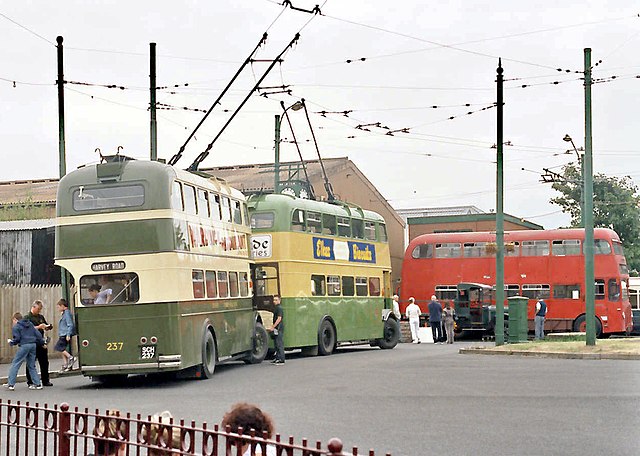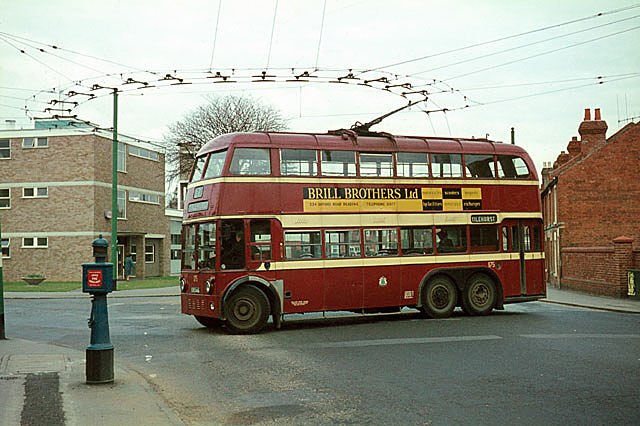A current collector is a device used in trolleybuses, trams, electric locomotives and EMUs to carry electric power (current) from overhead lines, electric third rails, or ground-level power supplies to the electrical equipment of the vehicles. Those for overhead wires are roof-mounted devices, those for rails are mounted on the bogies.
Trolley pole wheel on top of the trolley pole of Twin City Rapid Transit Company No. 1300
Modern one-arm "pantograph" collector with double collector shoes
Trolleybuses with trolley-type current collectors, i.e. trolley poles on trolley wires
A bow collector on a small electric locomotive
A trolleybus is an electric bus that draws power from dual overhead wires using spring-loaded trolley poles. Two wires, and two trolley poles, are required to complete the electrical circuit. This differs from a tram or streetcar, which normally uses the track as the return path, needing only one wire and one pole. They are also distinct from other kinds of electric buses, which usually rely on batteries. Power is most commonly supplied as 600-volt direct current, but there are exceptions.
Busscar trolleybus in São Paulo, Brazil
Solaris trolleybus in Landskrona, Sweden
The "Elektromote", the world's first trolleybus, in Berlin, Germany, 1882
A double-deck trolleybus in Reading, England, 1966








